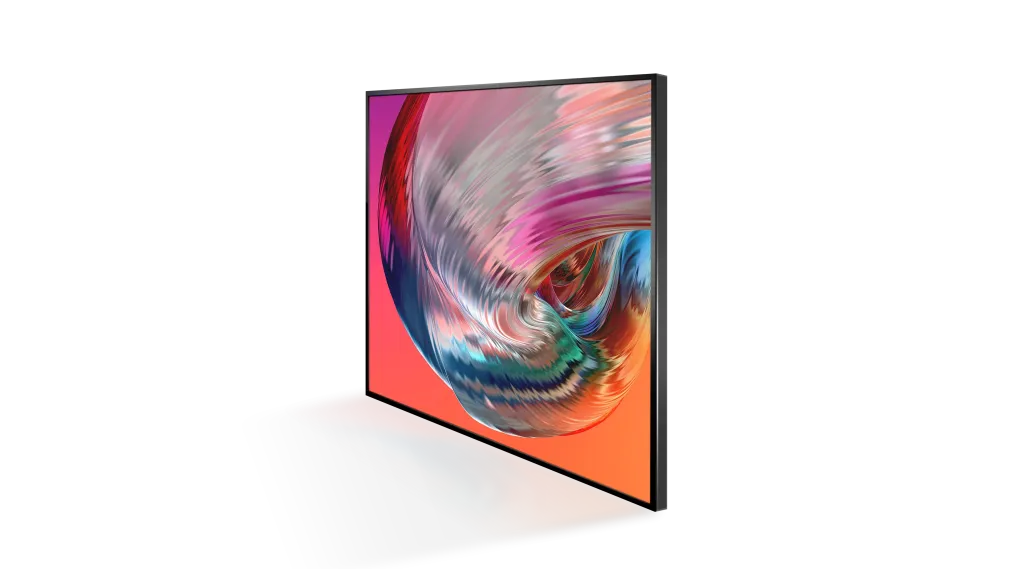Introduction
In the ever-evolving world of display technology, square LCD displays offer a unique form factor that distinguishes them from the more common rectangular or widescreen formats. These displays are recognized for their balanced dimensions, which provide a different set of advantages and applications. This comprehensive article explores the intricacies of square LCD displays, including their features, benefits, diverse applications, and future trends.
What is a Square LCD Display?
A square LCD display is a type of liquid crystal display where the width and height are equal, resulting in a 1:1 aspect ratio. Unlike traditional rectangular screens, which may have an aspect ratio of 16:9 or 4:3, square LCD displays are symmetrical in shape. This unique form factor caters to specific needs and environments where the traditional widescreen format might not be ideal.
Key Features of Square LCD Displays
1. Aspect Ratio and Form Factor
Aspect Ratio: Square LCD displays have a 1:1 aspect ratio, meaning that the width and height are the same. This ratio is less common but offers a distinct approach to displaying content.
Form Factor: The form factor of square LCD displays is compact and uniform, making them suitable for environments where a balanced visual display is desired.
2. Resolution and Pixel Density
Resolution Options: Square LCD displays are available in various resolutions, from standard definition (SD) to high definition (HD), full high definition (Full HD), and even 4K. The resolution choice depends on the specific application and the need for image clarity.
Pixel Density: High pixel density is crucial for square LCD displays to ensure that the content remains sharp and detailed, even in the compact form factor.
3. Color Accuracy and Brightness
Color Accuracy: Advanced LCD technology allows square displays to provide accurate and vibrant colors. This is essential for applications that require precise color reproduction.
Brightness Levels: These displays can be designed with varying brightness levels to suit different environments, from indoor settings to bright outdoor conditions.
4. Viewing Angles
Wide Viewing Angles: Modern square LCD displays often incorporate In-Plane Switching (IPS) technology to ensure consistent color and contrast from various viewing angles.
Enhanced Visibility: Wide viewing angles are particularly useful in collaborative environments or public displays where the screen needs to be seen clearly from multiple directions.
5. Durability and Build Quality
Robust Construction: Square LCD displays are designed to be durable and reliable, with sturdy materials that can withstand physical impacts and environmental factors.
Longevity: These displays are built for long-term use, with features that minimize the risk of screen burn-in and other common LCD issues.
Applications of Square LCD Displays
1. Retail and Advertising
Point-of-Sale Systems: Square LCD displays are often used in point-of-sale (POS) systems, where they provide information to both customers and cashiers in a compact format.
Digital Signage: In retail environments, square displays are utilized for digital signage, showcasing advertisements, promotions, and product information.
2. Industrial and Control Panels
Control Interfaces: In industrial settings, square LCD displays serve as control panels for machinery and equipment, providing essential data and interface options in a balanced format.
Monitoring Systems: These displays are also used in monitoring systems to present real-time data and alerts in a clear and concise manner.
3. Consumer Electronics
Wristwatches and Wearables: Square LCD displays are commonly found in digital wristwatches and other wearable devices, offering a compact yet functional screen for displaying time and other information.
Portable Devices: Some portable electronic devices, such as handheld gaming consoles and compact cameras, use square LCD displays for their balanced and space-efficient design.
4. Medical and Healthcare
Medical Monitors: In medical settings, square LCD displays are used for monitoring patient data and imaging, providing a clear and accurate view of critical information.
Diagnostic Equipment: These displays are also employed in diagnostic equipment, where their precise color accuracy and resolution are essential for accurate readings.
5. Educational Tools
Interactive Whiteboards: Square LCD displays can be used in interactive whiteboards and educational tools, offering a versatile and engaging medium for teaching and presentations.
Student Tablets: Educational tablets and devices may feature square LCD displays to provide a compact and user-friendly interface for students.
Advantages of Square LCD Displays
1. Balanced Viewing Experience
Uniformity: The square form factor provides a balanced viewing experience, which can be advantageous in applications where symmetrical content display is beneficial.
Design Flexibility: The uniform shape allows for creative and flexible design options, making it possible to integrate the display into various types of fixtures and setups.
2. Space Efficiency
Compact Design: Square LCD displays fit well into compact spaces, making them ideal for applications where traditional rectangular displays might not be practical.
Optimized Use of Space: The balanced dimensions make it easier to optimize space usage in both physical installations and digital content layouts.
3. Enhanced Usability
Versatile Applications: The square format is versatile and can be adapted for a wide range of applications, from industrial controls to consumer electronics.
Consistent Viewing Experience: Square displays provide a consistent viewing experience, which can be advantageous in environments where users need to view content from different angles.
Challenges and Considerations
1. Market Availability
Limited Options: Square LCD displays are less common compared to their rectangular counterparts, which may result in fewer options and potentially higher costs.
Customization: Finding a square LCD display with specific features or specifications may require custom solutions or adjustments.
2. Integration
Compatibility: Integrating square LCD displays into existing systems or products may require additional design considerations or modifications to accommodate the unique form factor.
Content Adaptation: Adapting content for a square display can be challenging, especially if the content is traditionally designed for rectangular screens.
3. Cost Considerations
Higher Costs: Due to their specialized nature, square LCD displays may come at a premium compared to more common display formats.
Maintenance: Maintaining and servicing square LCD displays may be more complex and costly, especially if they require specialized parts or expertise.
Future Trends in Square LCD Displays
1. Technological Advancements
OLED Integration: The future may see the integration of OLED technology into square displays, offering enhanced color accuracy, contrast, and energy efficiency.
Flexible Displays: The development of flexible LCD technology could lead to innovative new forms of square displays that can bend or conform to different shapes.
2. Increased Interactivity
Touchscreen Capabilities: The addition of touchscreen functionality to square LCD displays could expand their usability, allowing for interactive applications and user interfaces.
Smart Features: Future square displays may incorporate smart features such as wireless connectivity and integration with IoT devices, enhancing their functionality and connectivity.
3. Enhanced Customization
Tailored Solutions: Advances in manufacturing and design technology may lead to more customizable square LCD displays, allowing for greater flexibility in size, resolution, and features.
Adaptive Content: Improved software and design tools will facilitate the creation of content optimized for square displays, making it easier to utilize their unique form factor.
Conclusion
Square LCD displays offer a distinct and versatile solution in the world of display technology. Their unique form factor, combined with advanced features such as high resolution, color accuracy, and durability, makes them suitable for a wide range of applications, from retail and industrial use to consumer electronics and healthcare. While there are challenges associated with their market availability and integration, the advantages of balanced viewing, space efficiency, and enhanced usability make square LCD displays a valuable option for many scenarios. As technology continues to advance, we can expect further innovations that will expand the possibilities and applications of square LCD displays, providing even more opportunities for their use and integration.


